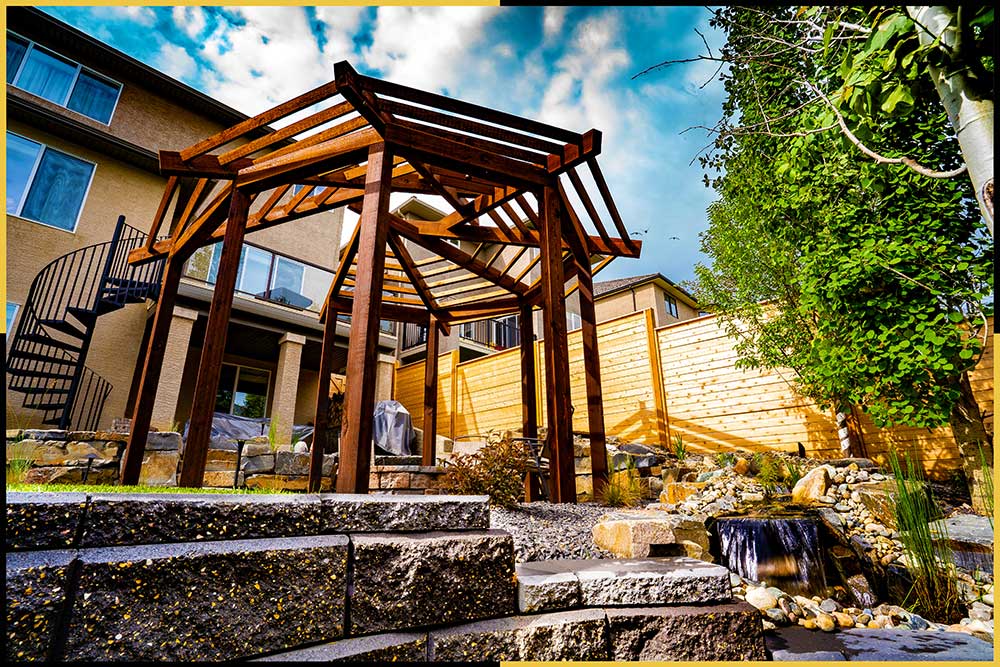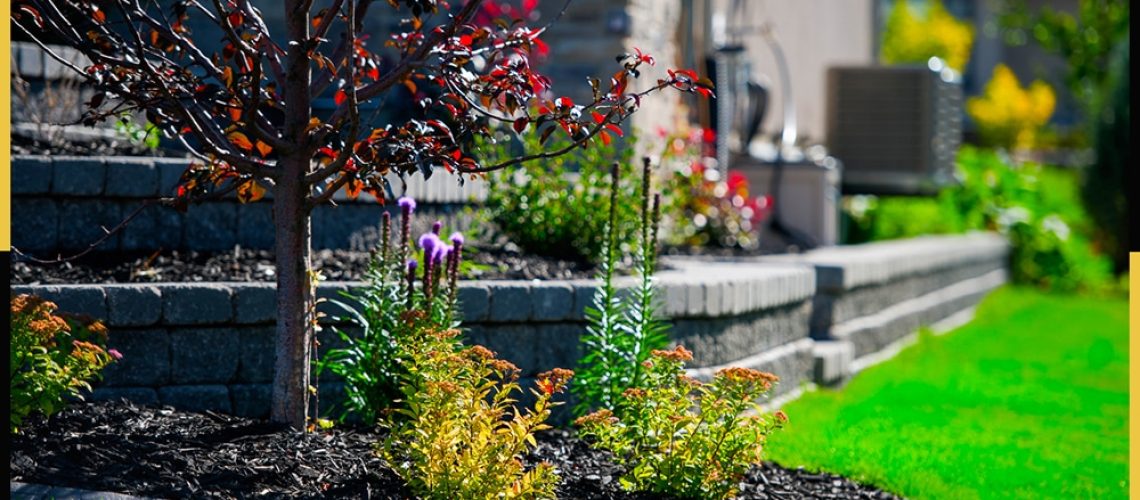It’s super exciting with any home improvement, renovation, or landscaping projects, like this Royal Oak Landscaping Project in Calgary. In many cases, homeowners cannot wait to get started. However, proper landscape design, planning and preparation are vital stages to ensure that the landscape design process and the entire job runs as smoothly as possible. The overall result is ultimately the desired outcome for everyone involved.

Depending on the project’s size and scale, some landscape contractors will have a dedicated team of architects and designers to create complete drawings and blueprints. The entire job is broken down into stages, which is great because it’s one less thing the customer or the workmen to worry about. The landscape designer and the construction crew will work closely with the client to make sure the design matches their desires and purposes for having taken on the project in the first place.
Not all jobs are so large that they require dedicated professionals to whip up drawings and designs down to the project’s finer details. In many cases, especially in the private and domestic sectors, landscape teams will work directly with their customers, who may want to rearrange or redesign their own backyards. Sounds easier than running those bigger jobs, right? Even during smaller domestic projects, the job design must be practical. There is still no room for complacency on either part when designing or carrying out the works.
Suppose you’re a homeowner looking to develop your garden space and wanted some quick tips on your new garden design. In that case, it’s essential to understand these basic 7 principles of landscape design to avoid any unnecessary stress when working with a team of professional landscapers.
You could say these same principles apply to any restoration or new build project. However, these principles don’t necessarily have to apply to every aspect of every project.
1. Unity
Although the 7 principles don’t necessarily need to be considered in any particular order, unity might be the most crucial principle when carrying out a full design. Put merely, unity in the agreement is how well the elements complement and suit one another. For example, if you aim to design a winter haven with a complimentary outbuilding of a few stone features to match the theme, but you complete the project with a row of cacti at the entrance, now the two elements would contradict one another. A reasonable solution might be to trade the cactus for a Nordmann Fir, more commonly known as the ‘Christmas tree,’ as this would match the rest of the design, creating unity throughout. It is also worth considering the property at which the project is being carried out. The Calgary landscape design company needs to consider the architecture of the building. If, for example, a landscape project is to be carried out at a small, timber-framed house, gigantic masonry structures may not compliment the home all that well.
2. Balance
Without considering balance, you could start a project expecting a stunning outcome only to find the final result looks like pure chaos. Harmony and balance, similarly to unity, is the idea that all the elements complement one another. Yet, none overshadow, or no elements overpower the visual appearance. In some cases, the balance could also imply symmetry. However, producing a symmetrical landscape project can be quite challenging. Layouts are rarely symmetrical, to begin with, and many of the elements used are natural products like stone and timber.
3. Simplicity
Often when starting out a new project, there is an abundance of ideas from both the client and designer alike. Especially when the budget is high, and finances don’t seem to be of any issue. However, it is crucial not to get too carried away with design to prevent an organized mess. Each element must be prioritized accordingly to ensure a well-organized, top quality finish to the project.
4. Variety
Now, this may seem contradictory to simplicity. Still, it’s essential to not get carried away with one or the other in this case. Variety doesn’t require too much explanation. It merely is the idea of adding a range of features to the project in different shapes and sizes. Again, simplicity, balance, and unity should also be taken into consideration.
5. Proportion
Ensuring each element is applied in proportion to one another is vital in producing a good landscape design. For example, if the project contained a vast tree or excessive retaining brick wall that stole the eye’s attention from the rest of the turf, footpaths, and flowerbeds, then the proportions of that element have let down the rest of the design.
6. Sequence
Well, sequenced elements complement each other well when applied correctly. An example of poor sequencing might be small plants leading through the garden, only to be broken up by a sizeable towering tree or other feature creating a broken sequence. Gradual increase or decrease in mass and size would offer better sequencing as it is definitely easier on the eye.
7. Emphasis
Lastly, but certainly not the least, emphasis on each design element must be considered. This helps avoid any harsh contrasts visually. If there was a centrepiece as part of the design, then added focus on this particular element would favour the design plan. Similarly to balance and unity, each component should complement the next and work well in harmony to avoid contrast and create unwanted emphasis on one part over another.
If, like many regular customers to landscape projects, you have a design in mind, it’s important to consider these basic yet efficient principles when overlooking the project. Not only will applying these assist in a well-decorated finish, but they will also help in the job run smoothly from start to finish. Again, these principles can be applied to almost any form of landscape construction or renovation works. They don’t necessarily all have to be taken into consideration. Still, it is definitely good advice, especially for those new to these kinds of projects.

